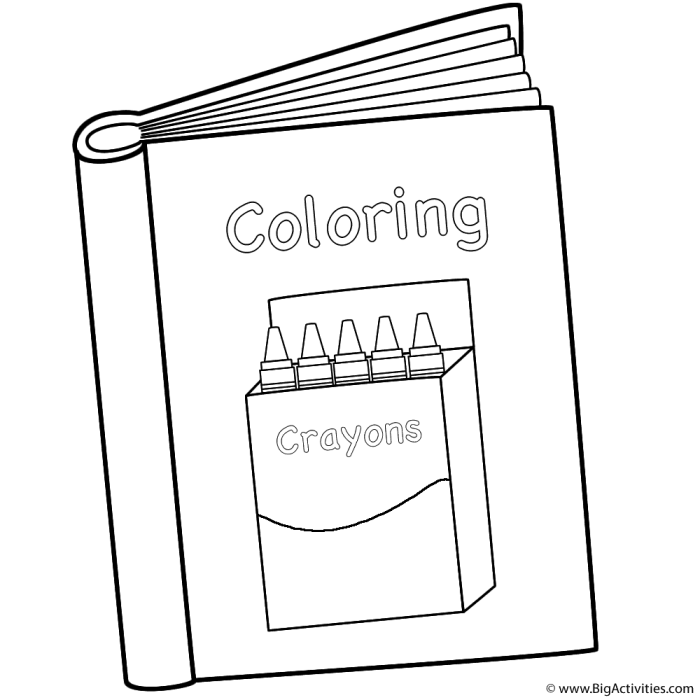Color by Number Coloring Book A Comprehensive Guide
User Experience with “Color by Number Coloring Books”

Color by number coloring books offer a unique blend of creativity and relaxation, appealing to a broad spectrum of users. Their simple premise—matching numbers to colors—belies a surprisingly engaging and therapeutic activity with benefits extending beyond simple entertainment. This section will explore various aspects of the user experience associated with these books, focusing on therapeutic benefits, skill levels, common challenges, and the impact of materials.
Therapeutic Benefits of Color by Number Activities, Color by number coloring book
Coloring, in general, has been linked to stress reduction and improved mental well-being. The focused attention required in color by number activities provides a meditative quality, allowing users to disconnect from daily anxieties. The repetitive nature of the task can be calming, promoting mindfulness and a sense of accomplishment as the image gradually takes shape. Furthermore, the act of choosing colors and carefully filling in designated areas can be a therapeutic outlet for self-expression, fostering a sense of control and creativity.
This is particularly beneficial for individuals experiencing stress, anxiety, or other mental health challenges. Studies have shown that engaging in creative activities like coloring can lower cortisol levels (a stress hormone) and promote relaxation.
Skill Levels Catered to by Color by Number Books
Color by number books cater to a wide range of skill levels, ensuring accessibility for all ages and abilities. Beginner books typically feature larger numbered areas, simpler designs, and fewer colors, providing a gentle introduction to the activity. Intermediate books offer more complex designs with smaller numbered sections and a wider color palette, demanding increased precision and attention to detail.
Advanced books often incorporate intricate patterns, fine details, and a vast array of colors, requiring a high level of focus and skill. This tiered approach allows users to progressively challenge themselves and experience a sense of growth and accomplishment.
Common Challenges Faced by Users
Several challenges can impact the user experience with color by number books. Staying within the lines can be difficult, especially with smaller numbered areas or fine details. Color selection can also be a challenge, as users might struggle to find the perfect shade or match colors consistently. Maintaining focus and patience, particularly with larger or more complex designs, is another common hurdle.
Furthermore, some users may experience frustration if they make mistakes or find the task too repetitive or tedious. Finally, the physical act of coloring, particularly for extended periods, can lead to hand fatigue.
Influence of Paper Type and Coloring Tools
The choice of paper and coloring tools significantly impacts the overall user experience. Thicker, high-quality paper prevents bleed-through, ensuring a clean and enjoyable coloring experience, especially when using markers or watercolors. Thinner paper, on the other hand, can lead to frustration due to bleed-through and smudging. Similarly, the choice of coloring tools—crayons, colored pencils, markers, or watercolors—affects the final result and the overall experience.
Crayons provide a bold, opaque finish, while colored pencils allow for layering and subtle shading. Markers offer vibrant colors but may bleed through thin paper. Watercolors allow for a more fluid and expressive approach but require more skill and control.
Tips for Improving the User Experience of a Color by Number Coloring Book
- Use high-quality paper to prevent bleed-through and smudging.
- Offer a variety of difficulty levels to cater to different skill sets.
- Include clear and easy-to-read number guides.
- Provide suggestions for color palettes to enhance the user experience.
- Offer alternative coloring techniques and tips for users.
- Consider incorporating perforated pages for easy removal and display of completed artwork.
- Ensure the designs are visually appealing and engaging.
Content Creation for “Color by Number Coloring Books”

Creating engaging color-by-number coloring books requires a thoughtful approach to artwork selection and preparation. The process involves choosing appropriate source images, converting them into a numbered format, and ensuring the final product is visually appealing and easy to use. This section details the steps involved in this creative process.
Artwork Creation for Color by Number Adaptation
The key to a successful color-by-number design is choosing artwork with clear, defined shapes and a limited color palette. Photographs, while visually appealing, often present challenges due to their complex gradients and subtle color variations. Illustrations, on the other hand, tend to be more suitable because they typically feature bolder colors and simpler forms, making the numbering process easier and the final result more satisfying for the user.
The level of detail should also be considered; overly intricate images might become frustrating for users to complete. Simpler images with larger color sections are generally preferred, especially for younger audiences.
Software and Tools for Artwork Preparation
Several software options are available for creating and preparing color-by-number artwork. Popular choices include Adobe Photoshop, GIMP (a free, open-source alternative), and even simpler programs like Microsoft Paint for basic designs. These programs offer tools for image editing, color selection, and the creation of numbered layers or regions. Beyond the core image editing software, additional tools like vector graphics editors (such as Adobe Illustrator or Inkscape) can be useful for creating clean, scalable line art that’s easily converted into a numbered format.
Converting an Image into a Numbered Format
The conversion process involves several steps. First, the chosen image is cleaned up and simplified, reducing unnecessary detail. Next, the image is divided into distinct color regions. Each region is then assigned a unique number, and this numbering is carefully overlaid onto the original artwork. This can be done manually using the software’s drawing tools or with automated tools available in some programs that allow for selecting regions of similar color.
Finally, a separate line art version is created, often by converting the image to black and white and increasing the contrast to make the Artikels clear and distinct. The numbered regions are then added to this line art layer to create the final color-by-number design.
Comparison of Image Types for Color by Number Books
Photographs, while visually rich, often require significant simplification to be suitable for color-by-number. The many subtle color variations can lead to a large number of color regions and make the coloring process complex. Illustrations, conversely, are often better suited. Their simpler color palettes and clearly defined shapes translate easily into a manageable number of color regions, making the coloring experience more enjoyable and less frustrating.
Cartoon-style illustrations, in particular, work exceptionally well due to their bold lines and distinct shapes.
Creating a Simple Color by Number Design Using Image Editing Software
Let’s consider creating a simple design using a common program like GIMP. First, import a simple image, for example, a drawing of a single flower. Then, using the selection tools (e.g., the “fuzzy select” tool), carefully select areas of similar color. Create a new layer for each color region. Assign a unique number to each layer, using the text tool.
Finally, flatten the color layers and create a separate black and white line art layer to produce the final color-by-number design. This simple process can be adapted for more complex images, though more time and skill are required for more intricate designs.
Color by number coloring books offer a structured approach to coloring, guiding users through shading specific areas. For fans of Pixar’s animation, a fantastic alternative is the monsters inc coloring book , which offers a similar level of detail but with a more free-form approach. Ultimately, both types of coloring books provide enjoyable and creative outlets, catering to different preferences.
